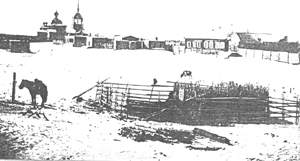
Yakutia late 19th and early 20th century
I. W. Shklovsky: on criminal exiles

Isaac Vladimirovich Shklovsky was a Russian journalist. In 1886 he was charged with being a revolutionist, and was exiled to Sredne Kolymsk from 1886 to 1892. In 1891 he was in Nizhni Kolymsk.
He passed the time writing about the local people and their lives, and this work was published in articles and a book about his time in exile called "In Far North-East Siberia". In this book he says
"The Yakuts in this part of the country (referring to South Yakutia) are healthier, more energetic and less oppressed than their brothers in the far North-East, for the criminal settlers have not so much liberty.The Oulooss (Ulus, administrative clan unit) tries at first to get rid of the criminal by giving him butter, a sack of barley meal and 10s. if he will go away and never return, and those who do return meet with a very unpleasant reception.
Frequently there are terrible murders, the Yakuts throwing the criminals into ice-holes, which they can do without fear, for the criminals, being outlaws have no rights."
He gave an example
"The fishing at Kresty was going on very well, but life in the village was poisoned by the Haillak (transported criminal) Titov, who had recently been sent there. This man must have committed many great crimes to have merited the punishment of being sent to the farthest north-east of the Kolyma region, which bears the official title: "Unsuitable for human habitation". A common criminal is sent on from place to place in succession, according to the number and gravity of the offences which he commits; beginning with the Irkutsk Province, on the Lena, next Olekminsk, next one of the Oulooss in the Yakutsk district, then to Verkhoyansk and Indigirka, and finally to the Kolyma district, where he remains, for the simple reason that it is not possible to send him any further north. Thus it will be seen that to the far north-east none but the veriest prison dregs are sent - inveterate and irreclaimable criminals.The haillak knows perfectly well that all is ended for him when he is once in Kolymsk; escape is impossible, for no human being can penetrate the polar forest, and to his exasperation is add a gloomy despair. He is sent to a Yakutian camp (Oulooss) and the Yakuts have to maintain him. They build a hut for him, give him a horse, supply him with meat, fish, frozen cream, tea - in a word everything.
In their reckoning each haillak costs the Oulooss ten or twelve roubles a month and this when the Yakuts themselves are obliged to live on bark, flavoured with a little sour milk, and when in the Verkhoyansk region they are obliged to eat field mice so that they may not die of starvation.
In order to protect their wives and daughters from the haillak, the Yakuts give him an orphan girl with whom to cohabit. Pitiable indeed is the plight of this wretched girl! Her terrible tyrant rules her with fist and cudgel, and her face is never free from bruises. The haillak so despises the Yakuts that although he may live for years among them, the only word of their language which he will condescend to learn is "Give!".
Life under these conditions is equally intolerable on both sides. The Yakut regard the haillak as vermin, as a savage, wicked beast that drains their life; as an evil satyr who will violate wives and daughters in the presence of their husbands and fathers. On the other hand, the criminal forced to live among savages, who do not understand him, feels his position to be worse than solitary confinement. Finally driven to desperation he does something terrible in order to compel the authorities to remove him from this accursed region."
"While I was in the Kolymsk district one of these criminals, without any reason, threw the child of a small chieftain on the fire and held him their with an iron rod until he was burnt to death. Despair gave courage to the Yakuts. They sprung upon him, bound him, and took him to Sredne Kolymsk, and from there to Yakutsk where he was sentenced to twelve years' hard labour."
"Near Nizhni Kolymsk there is a clan of eighteen Yakuts who have to maintain fourteen of these transported criminals. It is difficult to believe, but it is a fact that the entire clan are the slaves of the haillaks. The Yakuts give to each haillak everything necessary - draw nets, dogs, sledges etc. The savages themselves having no nets of their own, work for him, receiving for themselves only one third of the total catch. Very often the haillak would trade all the things for drink and then demand new ones."
"On my journey to Kresty I heard much about Titov. The Yakuts, both men and women, trembled all over when they pronounced his name. Titov was about 50 years old, and was a strong healthy man. Immediately on his arrival he demanded a hut, a horse and dogs ... and a woman, and he threatened to burn their village if his demands were refused. They gave him what he asked. Next he demanded a monthly supply of meat, fish and tea, and this he also received but still he was not satisfied. He would not cast the nets himself. "Why should I get my feet cold and wet casting the nets? I was not sent here to work".
...Titov took all the yukala (dried fish) and fish that he wanted to from under the very eyes of the owners. He fed his dogs with the best salmon which he had taken from the Yakuts, and finally he sold his nets and demanded new ones.
......All the villages decided to send a deputation to the ispravnik at Sredne Kolymsk begging him to send the haillak elsewhere, or they would leave the place and encamp in another district. The Yakuts felt that the haillak was sent to punish them, neither were they protected, even if the nearest Russian official was sympathetic he could be miles away."
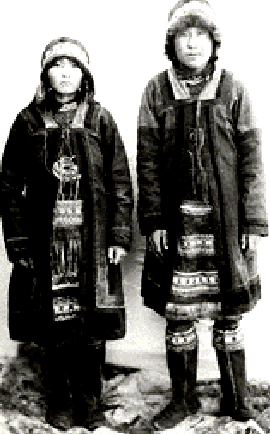
"About a hundred years ago (ie in the late 18th century when the Billings expedition was in the Kolyma region) there lived by this river (the Omolon) three large clans of the race Yukaghir. Wrangel writes of their great deer-hunting expeditions in the autumn when herds of these animals crossed the river Omolon, and many hundreds of savages took part in the hunts; but alas! there are only eighteen people remaining today of those three great clans.Nobody was on the bank, so, after beaching our karbass (boat) we went in search of the Yukaghir huts. Had we not been utterly exhausted, with a distance of 150 versts between us and the next village we like all Russians would have preferred to pass on without visiting these unhappy savages.
We could see nothing through the high, thick willow bushes; but suddenly there appeared about a dozen people, old and young, who ran to meet us, shouting joyfully in welcome. some put their arms through ours, others helped to carry our belongings and in the Yakutian tongue they said "Come, friends, came and rest!"
Through the bushes, as we sent along, we caught sight of conical huts with holes in the top, through which smoke was issuing; and the savages led us with great respect to the largest and best of the huts. They hastened to spread bear and deer skins on the floor, that we might rest comfortably, and the women put a kettle on the fire; their metal breast plates clinking as they moved. They all sat round us. "Now, friends, tell us the news," said the oldest among them. "We so seldom see any passers-by." said another. Ah, yes, hapless people, it is indeed seldom that your see passers-by!
Why were our hearts wrung with pain when we were thus warmly welcomed? Why were we choked with painful emotion which we strove to repress, as we looked upon these poor, kind savages? The unfortunate creatures were nothing but living corruption! One instead of a nose, had a decaying hole in his face, the eyes of another were set in horrible red, suppurating orbits; a third resembled a death's head, with his lips fallen away from the rotting yellow teeth.
The conquerors had not only swept away almost all of this amiable people, but had infected the remaining few with two terrible diseases - smallpox and syphilis. Absolutely all on the Omolon are syphilitic; and in their case it would see that syphilis is united with the even more horrible disease of leprosy. There does not appear to be any other explanation of this living decay of the suffers, for in Nizhni Kolymsk although nearly everyone is syphilitic nowhere are there to be seen such living corruption as these dwellers by the Omolon. And this is why Russians make a wide detour in order to avoid the pitiable remnant of a once great tribe and this is the reason why these poor creatures so seldom see a stranger."
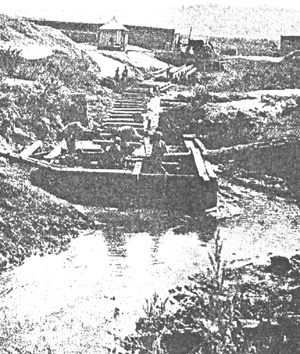 In 1892, when Shklovsky was in the south of Yakutia, on his return from exile in the Kolyma region, he came to the goldfields:
In 1892, when Shklovsky was in the south of Yakutia, on his return from exile in the Kolyma region, he came to the goldfields:
"Right in our way was a sledge with a covering of sacking. The poor little thin horse stood with drooping head...
Seated on the snow was a tall peasant dressed in incredibly torn, ragged clothes, his face and pose expressing the utmost despair.
-"They are coming from the hungry places and are going to look for work at the goldfields. So many of them try it; but there they won't take on any Russians, and certainly a man in bark shoes is worth nothing," proudly said my driver.
...Under the ragged covering lay several children and a woman apparently ill with fever.
...They had been driven by famine from the province of Penz, and they were going to the goldfields, not knowing that no delicate people or those with families would be employed there.
Signs of the vicinity of the goldfields appeared in the shape of spirit stores, which like a chain, encircle the goldfields, ensuring that not a single gold-miner can leave the place without also leaving with the spirit storekeeper the fruits of his long toil. These store keepers of the Lena are real potentates for by means of their wealth they hold in their hands this enormous district, together with its officials. Besides the exploitation of the inhabitants who are always in their debt, these "Kings" do incredible things....
...A spirit storekeeper is generally a coarse, uncultured, brazen-faced being, always half-drunk. His income is often £3,000 a year, nevertheless he lives in dirt and squalor and will even rob his labourers of their bread. He usually employs criminal settlers who being outlaws, have no appeal against injustice and therefore can be robbed with impunity.
...Near the town of Vitim are the famous gold fields of that name. There are 7,500 men at work in these goldfields. This work is always very laborious, and in Yakutsk it is worse because of the "frozen earth".
Work in the open goldfields is very hard but it is still harder in the mines where sometimes the workers are knee-deep in icy water. After their cruelly laborious toil they do not get very much rest in their common barracks, where the hygienic conditions leave much to be desired; and, as their food is also bad, all the miners suffer greatly from gastric complaints. In the spring of 1892 there were about a hundred deaths from dysentery....Scurvy is very common also among the miners...
On the 10th September, the weary worker who has endured the constant cold, hunger and suffering, receives the wages of his months of arduous toil and suddenly finds himself a man of capital. Hitherto he has no had a penny in his pocket and has subsisted entirely on credit from the company's store. ...Vitim is full of wild pleasure-seekers bent on enjoyment. The numerous shopkeepers, spirit sellers, and public house keepers have been waiting for this day.....Numbers of prostitutes come specially from Yakutsk and Irkutsk....Two or three days after the mad debauch all the money is gone."
Sieroshevski commented that about one third of the Yakuts were destitute and in perpetual debt to Russian or Tatar traders or their own Toyon. they had no cattle or haymeadow and nothing to live on unless they became a hired labourer to a rich (though not by Russian standards) Yakut, with the hope that eventually their fortunes will change.
Shklovsky says what it was like in the spring:
"By the month of March all the store of fish is consumed and the inhabitants begin to eat the food usually giving to dogs, such as fishbones, entrails, and half-decayed fish. At this time it is impossible to enter the house of a Kolymian because of the nauseating, overpowering stench of rotting fish, and towards the end spring conditions become worse and worse. In May the inhabitants are forced to eat their leather leggings and straps, also the skin of nalim which in summer is used instead of glass for the windows.
To live in Sredne Kolymsk then is torture. the sight of the yellow, swollen faces and glittering hungry eyes drives one mad. Gaunt half-dead dogs stagger weakly in search of the corpses of their companions and greedily devour them. In spring between the 28th of May and the 14th of June...all the winter store of food was gone. The fishing places were covered with water, ice and driftwood brought down from the upper part of the river. Life at such times was very hard. Every one saw famine-swollen, livid faces with fever-bright eyes, from which despair looked out. the natives ate boiled leather straps, fish-hones which had been thrown away in autumn, the hard fish-skin used for window-panes, etc. Incredibly thin dogs trembling with weakness, wandered about."
In 1889, an epidemic of smallpox wiped out tribes in the Kolymsk region. Only one man of the Chuvantsi survived. There had been several thousands of Yukagir in the 18th century, but by 1890, only a few individuals survived, and they suffered from diseases like syphilis and scurvy.
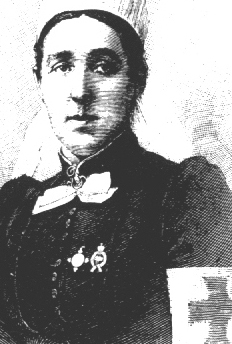 Christmas 1891, Shklovsky was told by Yakuts that a Russian woman was travelling from Yakutsk and that she had a frozen tongue. (Meaning that she could not speak Yakut). This was the English nurse Kate Marsden, on her way to visit the Yakutian lepers.
Christmas 1891, Shklovsky was told by Yakuts that a Russian woman was travelling from Yakutsk and that she had a frozen tongue. (Meaning that she could not speak Yakut). This was the English nurse Kate Marsden, on her way to visit the Yakutian lepers.
Kate Marsden was born in 1859 to a middle-class family, her father was a solicitor. Both her parents died when she was young, so she and her sister had to work for a living. She started training as a nurse at the Evangelical Tottenham Hospital.
After eight months when she was still only eighteen years old, she was sent with a group of nurses to Bulgaria to care for Russian soldiers wounded in the Russo-Turkish war. This was to give her not only familiarity with Russian language and culture, but her first encounter with leprosy.
On her return, Kate continued further training at the Westminster Hospital. She then spent four years in charge of a convalescent home in Liverpool.
In 1884, Kate had to go out to New Zealand to care for her sister who was seriously ill with tuberculosis.
After her sister, despite her careful nursing died, she stayed on in New Zealand where her skills and experience were much appreciated.
She found a job as Lady Superintendent of of the Wellington Hospital, helped to set up the first branch in New Zealand of the St.John's Ambulance Brigade and gave lectures on hygiene and first aid.
She also heard about the epidemic of leprosy in the South Pacific and the death of Belgian priest Father Damien who had contracted leprosy while working to help the lepers. She felt she had a calling to help the lepers herself, but plenty of others were already organizing aid for the lepers in Hawaii. So she returned to England, thinking she might be able to work with the lepers in India.
On Kate's return to London, she received an invitation from the Russian Red Cross Society. Her services to aid the sick and injured Russian soldiers had been recognized and she was invited to Moscow to be presented with a medal by the Tsarina.
Kate knew there were lepers in the Russian Empire, especially amongst the Yakuts. She could take this opportunity to get sponsorship from the Tsarina and Russian court to go to their aid. she needed finance to do this, so she wrote to Alexandra, Princess of Wales in the hope of patronage.
Princess Alexandra gave her a personal letter of introduction to the Tsar of Russia. The publicity she received made her unpopular amongst some of the wealthy ladies from whom she tried to raise funds for here Russian expedition. Kate was furious by insinuations that she was merely after an adventure holiday.
Kate arrived in Moscow in November 1890. After she had been presented with her medal, she asked her new Russian friends at the Red Cross for help in her quest for lepers needing her aid. She was advised to see the Governor of Moscow, Prince Dolgorukov, who granted her an audience. But what should she wear? She had no time and funds to splash out for something special and suitable for such an occasion, so she wore her nurses uniform. She found the prince helpful when she told him of her interest in lepers.
During the next few weeks Kate was twice called to the court at St.Petersburg with her letters of introduction. The Tsarina was interested in her proposals and also confirmed the report that Kate had heard when on her way to Moscow, by way of the Black Sea, that there was a special herb which help alleviate the sufferings caused by leprosy. The herb was to be found in Yakutsk province, where there was also a great number of lepers. So Kate decided she would go to Yakutia, find out what she could about the the conditions of the lepers there, and also search for the curative herb.
A number of ladies helped her prepare for the journey with food and clothes and letters of introduction to people in Siberia. She was obliged as a young single woman, despite her already considerable experience and responsibilities to take a female companion. There was quite a number of intelligent, educated young British women in Russia - as they were in demand as governesses. Miss Ada Field was a good choice as companion, as unlike Kate she had learnt to speak Russian really well.
They were able to take the Trans-Siberian railway for part of the journey. But it had only got as far as Zlatovsk, where they arrived all bundled up in layers of furs in February 1891, and transferred to sledges with drunken drivers for the remainder of the journey, stopping off at night at the post stations which provided no comforts and amenities whatsoever.
Woman travellers especially suffered from the lack of privacy, the lack of hygiene, the lack of what was in the 19th century referred to as "comfort stations". At Omsk they spent two weeks recovering in the Governor's house.
Ada did not feel able or willing to continue further. In her place as interpreter, the Governor provided Kate with an old Russian soldier who could speak French and a little English.
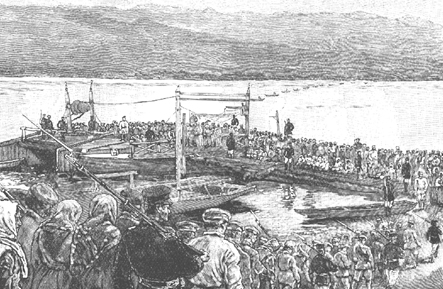 On the way between Omsk and Irkutsk, Kate visited the prisons for exiled convicts. She estimated there were 40,000 prisoners in Siberian prisons, or being moved to labour camps. She was appalled by the conditions in the prisons, and the despair of the inmates, chained up from waist to ankle. Especially the conditions suffered by women prisoners some of whom had babies and young children with them. She wished she could do more for them, than provide little packets of tea and sugar and religious tracts.
On the way between Omsk and Irkutsk, Kate visited the prisons for exiled convicts. She estimated there were 40,000 prisoners in Siberian prisons, or being moved to labour camps. She was appalled by the conditions in the prisons, and the despair of the inmates, chained up from waist to ankle. Especially the conditions suffered by women prisoners some of whom had babies and young children with them. She wished she could do more for them, than provide little packets of tea and sugar and religious tracts.
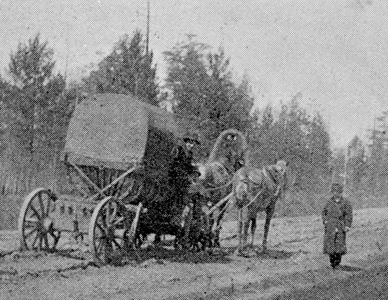 By the time Kate's party had reached Krasnoyarsk, the snow had melted and they had to continue the bumpy journey in a tarantass, a wooden carriage. She arrived in Irkutsk in the middle of May.
By the time Kate's party had reached Krasnoyarsk, the snow had melted and they had to continue the bumpy journey in a tarantass, a wooden carriage. She arrived in Irkutsk in the middle of May.
Here she visited the Governor-General and proposed a committee of influential people in Irkutsk to raise sympathy and funds for the northern lepers. She also got an official printed statement on the officially correct situation of the lepers. This said there were eighty lepers in the region of Yakutsk but there were probably more unreported, as once it was known a person had this disease, they were expelled from their home and community. A small hospital had been built for forty lepers in the Sredni Viluisk region in 1860, but had closed down for lack of financial support three years later. Since then nothing had been done to help lepers at all.
The committee meeting was held in Irkutsk, and Kate was appointed official investigator on behalf of the Irkutsk authorities. She had to find out exactly how many lepers there were in the Vilyuisk region, the conditions they lived in, and what could be done for them.
Kate's experience in running a hospital was clearly paying off, since she had succeeded in obtaining just what she wanted, official sanctions from central and regional authorities to achieve her ambition.
She left for Yakutsk, by tarantass to the Lena and then up the Lena in a small cargo boat which took three weeks before they docked at Yakutsk, in the middle of June 1891.
To someone that has spent a lot of funds and effort getting there (as also from my own experience a century later) the first sight of Yakutsk, the capital of a country bigger than India or Western Europe, hits you as a bit an anticlimax. Kate found it "not a pretty place, with a dead and dreary appearance".
But this impression changes as soon as you are welcomed. Kate was met by locals including the bishop who said he would help. He had heard about the useful herb. An old Cossack, Jean Procopieff offered to lend her both men and horses and to accompany her to Vilyuisk. Kate left Yakutsk on her way to visit the lepers with an escort of fifteen men and thirty horses.
Kate claimed she had little experience of riding, and none of riding astride the horse, as the Yakut ladies did, but which was still considered indecent in England.
Naturally she had worried about what she should wear, and had chosen for this part of the journey a tweed trouser suit. Although this was much like ladies at the time were wearing for bicycle riding and other outdoor activities, Kate worried about the effect of her appearance in photographs wearing this practical outfit would appear to the ladies back in Britain on whose goodwill she was depending if she was to get money from them to help the lepers.
The Yakut saddle is wood, the ladies' saddles are wide, but to someone unused to riding it got very uncomfortable by the end of the day. Her tweed suit still was not enough protection against the swarms of biting mosquitos, and must have been very hot and sticky - she probably did not realize just how hot Yakutia gets in summer, with temperatures of up to around 40 Celsius or about 100 Fahrenheit in day long sun.
it took two weeks to get to the Vilyuisk region in western Yakutia. Here she was taken by a local priest to the remains of the leper hospital that had been founded and then shut thirty years before.
The Yakuts with them would not go near the place, although there was hardly anything left standing. Then the priest led her on horseback to a couple of huts inhabited by lepers, all severely handicapped and disfigured by their disease.
Kate got off her horse to examine them. She found out that anybody of any age, even small children, suspected of having leprosy, was driven out of their family and community and after that never allowed to approach within two or three miles of any village. Food left for them was usually stale leftovers, nearly always rotten fish, clothes were thrown out old rags.
The lepers had no medical attention and even the priests did not visit. The Yakutsk Medical Inspector told Kate he would not go into the huts to see the lepers, "on account of the stench similar to that coming from a dead body." Kate was told of an orphan boy of six or seven suspected of having leprosy, who was taken by his uncle into the middle of a dense forest and abandoned there in a rough shelter to die of cold and hunger.
In one of the settlements of lepers Kate and her party visited, she found an eighteen year old girl, whose mother had developed leprosy when she was expecting her. Although the girl did not have the disease she was forced to remain an outcast with the lepers. Kate was able to help her. She requested the local Police Inspector to employ this girl as a maid.
Kate visited four settlements of lepers in the Sredni Vilyuisk region and found them all horrific in their dreadful conditions. By this time she was exhausted and her escort insisted on two days rest in Vilyuisk.
They then headed for the east of Yakutia, towards Verkhoyansk. The ninth settlement of lepers was even more appalling than the eight Kate had already encountered. This was Hatinach "Twelve men, women and children, scantily and filthily clothed were huddle together in two small huts covered with vermin. The stench was dreadful; one man was dying, two men had lost their toes and half their feet, and they had tied boards from their knees to the ground so they could drag themselves along. The fur of their tattered clothes stuck to their open, weeping sores. Two of the children were naked, having no clothes at all, and with the exception of a few rags they are in the same state in winter. As I sat there among them, the flies were tormenting their festering wounds and some of them were writhing in agony."
What was heart rending was the joy and excitement of the lepers when they received the small gifts, - blankets, tea, that was all Kate could give them, with the assurance that someone cared enough to try to help them. Their gratitude made her upset as she realized how inadequate this little comfort was and that most of them would be dead before help reached them.
Kate campaigned throughout Yakutia. She organized people - the priests, officials and others with authority to help their local lepers, using as blackmail the report she would be making to the Tsarina.
If they founded a committee to raise funds for a leper colony, their efforts would be praised in the report, if they ignored the Imperial request to assist Kate Marsden with alleviating the lepers' distress, that would be in the report read by the Tsarina.
Kate found that local people were aware of the appalling situation of the lepers but any efforts to help had petered out through lack of organization and funding.
Kate told them of quite small things they could do that would greatly help the lepers in their locality. In one village she persuaded the inhabitants to provide a sled and horse so the lepers no longer had to stagger or crawl three miles across country, to the place where food was left for them. In another place she scolded the locals who only irregularly left out food for the lepers and that was rotten fish and stale milk.
By mid September Kate had travelled some two thousand miles around Yakutia and had met 66 men, women and children suffering from leprosy. In this time she had travelled on horseback through the rough wild terrain, in hot steamy weather, through clouds of mosquitos, without washing and changing her hot woollen clothes. Not surprisingly she had developed a painful abscess in her groin. Her escort arranged a cart lined with hay to take her back to Yakutsk. Here a maid helped her out of her dirty clothes and into a much needed bath.
Kate's return journey to Moscow took three months. At each town she called on people who had offered support to remind them of their promises tell them the conditions she found, and what was needed in the way of aid. Her return journey was not uneventful. One one occasion the horses bolted, the driver fell out and was trampled to death. One night she found that the woman who offered her a bed for the night expected her to share it with herself, her husband and his two brothers.
Kate's friend Ada Field met her in Tyumen and and they arrived in Moscow in December, and three days later left for St.Petersburg to establish the headquarters to look after the lepers.
Kate remained in Russia for another six months, fund-raising, lecturing and organizing a leper colony for Vilyuisk. When she left for England in May 1892, money had been raised to establish a leper colony and four nuns of the "Sisters of Mercy" were heading for Yakutsk to continue Kate's work.
Her mission has been successful, except she never found the curative herb. Her efforts were praised in Russia. She was able to fill more than thirty pages of her book "On Sledge and Horseback to Outcast Siberian Lepers" The Record Press, 1892, with letter and testimonials. The Royal Geographical Society made her a Fellow. Queen Victoria presented her with a brooch.
In 1897 a leper colony was opened in Vilyuisk. It had ten houses for lepers, two hospitals, a doctor, a laboratory, a church and a library. It was just what Kate had campaigned for. She is remembered in Yakutia as a heroine.
Yet in Britain, she was still trying to appease critics who insisted she had been funded for little more than an adventure holiday. In 1921 she felt impelled to defend her actions by publishing a second book "A Vindication of My Mission to Siberia". She felt that her efforts had not been taking seriously and she was very depressed. Her health had never been as robust again after her Siberian trip and she was never fit enough to visit Yakutia again. She died in 1931.
Starting at Vladivostok - the port and terminus of the Trans-Siberian railway - Wenyon took the original post road across Southern Siberia.
On the way he occasionally encountered gangs of exiles being taken to the next prison on their way.
"There were seldom less than two hundred persons in a gang - women as well as men. They wore long coats of coarse, earth-coloured frieze, and were chained together as they walked. A file of soldiers with fixed bayonets marched on either side; there were vehicles in front for those who were sick, and for the little children of the exiles; and so, beneath the shadow of the pines, without a word, and with no sound but the confused tramp of feet, and the mournful clanking of the chains, the procession wended its way eastward, never to return.......But some of the gangs of exiles that we met were not on foot, but riding in little carts. They wore convict dress like the others, and so there was nothing in their appearance to indicate superior social position; but a glance at their faces was enough to prove to us that morally they were of a very different type; and I was not surprised to learn that these were not criminal, but political, exiles..........
There is no doubt that opinions subversive of social order and political stability are particularly rife in Russia, but the Government has yet to learn that its policy of servere repression is increasing the evil it wishes to destroy. It is illegal to give a public lecture in Russia, or to call together more than a very limited number of people for any private purpose whatever, even for a dinner-party in one's own house, without the special permission of the police, and, if such permission is granted, it is the express understanding that detectives shall be admitted to the assembly. The intelligence of the Russian populace is increasing in vigour and activity, and thought cannot be much longer denied utterance.........
When he arrived at the border, he was arrested and held there while they checked that he was not an escaped Siberian exile. When he finally crossed to Germany, the soldiers at the frontier post said that if he had come across Siberia, he must have had his full share of annoyances and wished him a quick and pleasant journey home to England.
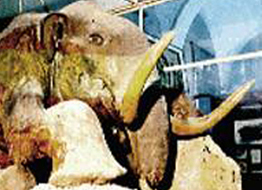
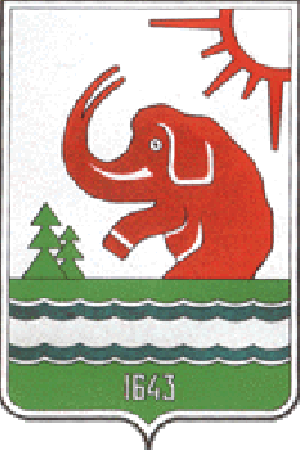 In the summer of 1900, the body of a well-preserved mammoth emerged from the Beryozovka River about 300 km from Srednekolymsk. When the news reached St. Petersburg, an expedition set out to retrieve it. In the autumn of 1901, the senior zoologist of the Zoological museum of the Academy of Sciences O.F. Hertz arrived at Sredne-Kolymsk. The mammoth had been preserved in the permafrost 8 metres down. They had to melt the ice with fires to dig the mammoth which was about 3 metres tall and nearly 4 metres long, out. It was cut into pieces to be transported back to St. Petersburg on 22 sledges to be re-assembled and put on display in the Zoological Museum. The mammoth is pictured on the Sredne-Kolymsk logo. The date on the logo is when the Russians got there.
In the summer of 1900, the body of a well-preserved mammoth emerged from the Beryozovka River about 300 km from Srednekolymsk. When the news reached St. Petersburg, an expedition set out to retrieve it. In the autumn of 1901, the senior zoologist of the Zoological museum of the Academy of Sciences O.F. Hertz arrived at Sredne-Kolymsk. The mammoth had been preserved in the permafrost 8 metres down. They had to melt the ice with fires to dig the mammoth which was about 3 metres tall and nearly 4 metres long, out. It was cut into pieces to be transported back to St. Petersburg on 22 sledges to be re-assembled and put on display in the Zoological Museum. The mammoth is pictured on the Sredne-Kolymsk logo. The date on the logo is when the Russians got there.
The Jesup Expedition was named after its sponsor, Morris K. Jesup (1830-1908), president of the American Museum of Natural History. who had made a fortune from the railroads and banking.
The idea of sending ethnographers to study the native peoples of the North Pacific was from Franz Boas (1858-1942), assisant curator in the American Museum of Natural History's Department of Anthropology. A recent immigrant from Germany, he himself was interested in the people of North West America.
The fieldwork in North East Siberia was entrusted to Waldemar I. Jochelson (1855-1937) and Waldemar G. Bogoras (1865-1936).
Both of them had already been working as ethnographers in Siberia, where they had both been exiled for political reasons. They had both been members of Nroldnaya Volva (the People's Will). This was a radical democratic revolutionary political party.
Jochelson had escaped from Russia in 1880, but had returned illegally in 1885. He was arrested at the border customs, and imprisoned for two years before being exiled to Yakutia for ten years. Here he passed his time by making a socialogical study of the Skoptsy. These were members of a religious cult who had also been exiled by the Russian government to Yakutia. They had no chance of attracting casual converts as all members had to be castrated to ensure total redemption. (Women members endured genital mutilation).
Jochelson's scientific paper on the Skoptsy, enabled him to be proposed by the head of the Eastern Siberian Department of the Russian Geographic Society for the Sibiriakov Expedition (1895-97) in Yakutia.
Bogoras was originally Nathan Mendelevich Bogoras. He had joined the Peoples' Will in 1882 at 17. He was arrested and imprisoned as a dissident in Taganrog, his home town. When he came out, he changed his name to Waldemar Germanovich Bogoras, and continued to write under the pen name N.A.Tan. He still was arrested, imprisoned for 3 years, and exiled for 10 years to Sredne-Kolymsk, where he arrived in 1889. Here he passed his time making a study of the local inhabitants and their customs and their folklore. In 1895, he was also invited to join the Sibiriakov Expedition.
Both men were in St.Petersburg with a fellow exile, Leo Shternberg, in 1898 when Boas was searching for Jesup expedition members. Shternberg was later employed to study the Gilyak in the Far East. Bogoras and Jochelson were signed up and in March 1900 arrived in New York, with their wives, Sofia Constantinovna Bogoras, and Dina Lazareevna Jochelson-Brodskaya.
Both wives were to accompany their husbands and share in the sceintific work of the expedition. But only their husbands were paid. They received $100 a month, from which advance expenses were deducted.
The Bogoras's and Jochelson's arrived with their heavy photographic equipment at Mariinsky Post, on the Anadyr River in July 1900. The Bogoras's were to stay with the Chukchee - 30 per cent of whom had just been wiped out by a measles epidemic.
While her husband travelled about with a Cossack and native guide, his wife stayed on the Anadyr river, and collected most of the material and information for the collections in the American Museum. This is not noted in the massive three part tome later published by the Museum.
The Jochelsons were to study the Koryak, Yukaghir, and Sakha (Yakut). When they arrived at the Gizhiga River, they found no Koryaks -about 25 per cent of the native population had been wiped out by a measles epidemic the previous winter and the survivors had abandoned the villages and moved into the mountains with their reindeer.
The Jochelsons decided to study the Maritime Koryak at Penzhina Bay instead. Their horses made heavy going through the boggy tundra, so it was winter when they arrived and they had to live in the native half-underground houses, where the only opening and ventilation was through the chimney hole in the roof.
They did not enjoy it. Living standards had not improved since 1865 and Kennan's visit. The houses were little more than wooden huts and filled with smoke. Everything was covered with greasy smelly soot, from the seal blubber lamps. The natives were stoned on fly agaric (they dried and chewed the magic mushrooms and then drank their urine so as not to waste any). They were also infested with lice which looked to the Jochelson's for a new home.
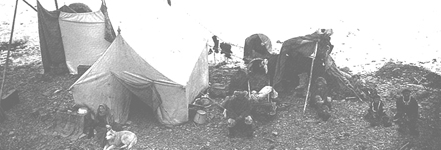 Later the next summer the Jochelson's headed for Verkhne-Kolymsk. Part of the journey was made floating in a raft down the Korkodon River. Dina did most of the photography. They had a special tent as a studio with a white sheet to use as backdrop. Dina also did most of the anthropology which at this time, meant taking certain measurements of people as well as photographing them, and also taking casts, and collecting ethnic artifacts.
Later the next summer the Jochelson's headed for Verkhne-Kolymsk. Part of the journey was made floating in a raft down the Korkodon River. Dina did most of the photography. They had a special tent as a studio with a white sheet to use as backdrop. Dina also did most of the anthropology which at this time, meant taking certain measurements of people as well as photographing them, and also taking casts, and collecting ethnic artifacts.
The Yukaghir women who were subjected to naked physical examinations by Dina, assumed her to be a doctor. Dina was to make use of her work and experience, by later taking a degree in medicine and using her anthropological work for her doctoral dissertation at the University of Zurich. This was published as was later on work on the women of northeast Siberia, but her contribution is not recognised in the massive tomes on the Koryak, the Yukaghir, and - slightly smaller, the Yakut.
Waldemar Jochelson was to lead the Aleut-Kamchatka Expedition of the Imperial Russian Georgraphical Society in 1909-11. From 1912to 1922 he was a curator at the Museum of Antrhopology and Ethnography of the Russian Academy of Sciences in St. Petersburg. (This amazing place was visited by me in 1981 when it was still for obscure reasons, not open to foreign tourists. Among its collections are some really odd stuff, like a collection of abnormal feotuses in bottles.) In 1922, the Jochelsons emigrated to New York.
The Bogoras's stayed in on in St. Petersburg, as it became Petrograd, then Leningrad. Waldemar Bogoras was made director of the Institute of the Peoples of the North. In 1932, he created and was the director of the Museum of the History of Religion.
The extensive material collected by Bogoras and Jochelson and their wives has formed a basis for much of the work on the history and people of Siberia since.
Had Kate Marsden wished to return to Yakutsk after 1900, she would at least have found her journey much quicker and easier. It was possible now for a traveller to board a train at Liverpool Street Station, via the Harwich-Hook of Holland ferry to Irkutsk. But the intended extension of this line to Yakutsk and on to the Pacific coast at Okhotsk, is still awaited.
The Russian-Japanese War of 1904/5, made it a priority to extend the line across the south of Siberia and through Manchuria to Vladivostok, where passengers could board a ferry to Japan. Business travellers, and those on adventure holidays could now get from London to Tokyo in under a fortnight.
Road travel in Yakutia remained a problem. Shklovsky described his journey to attend a wedding. "On the third day of our journey the ground became more hilly, the marshes were left behind and thick willow bushes showered golden dust upon us. As I had arrived in Sredne Kolymsk during the summer (I had journeyed 2,000 versts on horseback) these two days in the saddle did not tire me, but I was tortured by the mosquitoes, which did not give us a moments rest, and as the ancient Germans longed for Valhalla so I longed for my hut, on the threshold of which I could make a fire. I worried Spiridon (his Yakut friend) with questions. "How many kyoss further?" The kyoss is the Yakutian measure of length, but it is a very elastic one, for it is the distance to be traversed while ice melts in a kettle, and while water boils, and while meat is being cooked. As the kettles vary in size, the kyoss also varies in length. I do not know why, but the Russians there decided that a kyoss was about ten versts. According to Yakutian reckoning, and taking into consideration the varying sizes of kettles, there is a "large ten versts" and a "small ten versts." I did not know the size of the kettle by which Spiridon estimated the distance, but I felt convinced that he had a very vague idea of figures."It is only one kyoss and a half farther," he said encouragingly. We journeyed for another hour. All the bushes had vanished, and the forest began. We passed the forest and a lake also. I asked again: "How many more kyoss" "Two," he replied firmly." The kyoss or Koss was also used to measure distance in North-East India (where the Sakha people came from), and the British also tried unsuccessfully to standardize it. The cooking-pot hour is found in many parts of the world and the hours we now use as standard divisions of the day are based on it.
There were only two major routes to Yakutsk, one was a rough track from Irkutsk to Zhigalovo of 280 miles, with 1,600 miles to be done by boat up the Lena. The other from Yakutsk to Okhotsk and the Pacific, by way of the Aldan and Maya and was mostly on horseback and reindeer back at the beginning of the 20th century.
Motorized road transport which made such an impact on other countries, had less effect in Yakutia. The roads were not improved to any great extent. They are still either pot-holey muddy tracks, or improved pot-holey tracks of slag or gravel. Yakutsk boasts broken concrete roads in the centre of the city. Cars have very high suspensions. The permafrost is blamed.
Although the telegraph route from America to Europe across Siberia planned in the 1860s was abandoned when the transatlantic cable was laid successfully.
Shklovsky gave a story which showed how remote from central government and communications even Pacific ports were. Gijiginsk - in Koryak lands, was only accessable by sea although the Lamuts (Even) travelled on reindeer back overland from there - they refused to tell the Russians heir secret trail.
Officials sent out were often those whose colleagues pefered to keep at a distance. One of the Governors set himself up as a diety. Delighted to be sent their own god, the locals including the priest and deacon of the church acccepted his claim and paid him due homage. Every day he was carried in a procession through he town with bells ringing.
Each year the annual steam ship run by Greek shipping owner Phillippeuss, arrived in the harbour with long awaited goods, flour, cotton fabric, soap and many other things needed by the local inhabitants. The Captain was usually entertained by the Governor, but this new one did not contact him. When he enqired he was told he was away.
The next year when the ship turned up - The Captain was told the same story. This seemed a bit odd. The ship was the only shopping opportunity for the inhabitants and its arrival was the major event of the year.
The third year the same thing happened. The ship apparently left as usually, but this time the Captain had been given instructions to find out what was going on. The ship steamed out into the bay where it could not be sen from land. In the early hours of the morning, a small boat carrying a ship's officer, the doctor, and some sailors rowed back to Gijiginsk.
Through the morning mist, they could hear bells ringing, guns firing, drums beating. Bonfires were dotted around. When they entered the twon they encounered a procession. Eight Lamuts in their colourful embroidered festival clothes carried the governor on a litter - he was decorated with feathers, ribbons, bells etc and sat upright with great pride and dignity. They were preceeded by shamans in full ceremonial costumes beating their tambourines. Behind them danced the town's population joyously singing and shouting at their deliverance from the danger of losing their god.
Then they saw the officers of the ship which they had thought had left. The GOD was arrested and removed. At Vladivostok he was placed in a lunatic asylum.
More on the war against Japan in the North Pacific.
And how Britain trained the Japanese commanders and built the Japanese ships
Although Yakutsk had been left way out of the mainstream of business and tourism, the concentration of political exiles there and its outlying regions, like Kolyma, made it a hotbed of radical political ideas which spread amongst the Yakut population. After the 1905 Revolution a new Yakut national movement emerged.
A Yakut Union was formed under the leadership of Vasiliy Nikiforov, a Yakut lawyer, city councillor and playwright (later author of the play "Manchary" and others).
The things that irritated Yakuts most about Russian rule, was the interference of the police in the affairs of the Yakut community, the taxes and labour obligations - including the provision of horses, the transportation of Russian officials, and the arbitrary appropriation of land by the state for reallocation to Russian settlers.
The Yakut National Movement stated all land in Yakutia must belong to the Yakut people, they must govern their own affairs free from the Russian police, they must enjoy civil rights, and must be represented as a nation in the Duma in St.Petersburg.
To support and attempt to enforce these demands the Yakuts stopped paying taxes and withheld their labour. The Russian police were concerned that the natives were becoming aggressive and stocking up on firearms. In Yakutsk the Union made the city council stand down. Thousands of Yakuts were now joining the movement. The Russian Governor sent a message to the Ministry of the Interior to supply troops and machine guns. These never arrived. The whole country was in a state of revolution.
Eventually the Governor of Yakutsk succeeded in arresting the leaders of the Yakut Union and after this, by April 1906, the Union had faded away. But the request for a Yakut representative in the Duma had been granted and the leaders of the Union were soon released. The new Yakutian nationalism thrived. The politcal unrest in Russia, meant that leading socialists were turning up in Yakutia as political exiles. Strikes and demonstrations were limited by the size of the country and the difficulty of communications. As pointed out by one author, if a peasant tried walking to the next village he was likely to freeze to death before he ever got there. In 1911 there were mass demonstrations in major cities.
The Lena goldfields were in the south of Yakutia. The strike of 1912 occurred near the little town of Bodaibo, on the Vitim River. To get there from Irkutsk, required an overland trek to the River Lena, then boat up the Lena and Vitim.
Despite the lure of gold, first discovered in this region in 1843, the difficulty of getting there - and then surviving there caused problems. Travel was only possible in summer between June and September, the sparse local population was mainly Yakuts and exiles.
The Lena Gold Company (Lenzoto) was founded in 1861. In the 1880s Baron Horace Ginzburg and the House of Meier Trading Company - which was British, purchased shares. In 1896, Lenzot sold stock to raise capital. Ginzburg and Meier then controled Lenzoto which now become the largest gold mining company in Yakutia. The British company then built a narrow gauge railway to connect its Feodosievsk mines with Bodaibo. At first this heavy investment meant loss of profits, but by 1906, it had paid off. In 1908, the sons of Baron Horace Ginzburg, Alexander and Alfred made a new British company: the Lena Goldfields Limited, using seventy percent of the Lenzoto shares. By 1911, the campany had paid off debts and achieved monopoly on gold mining in the whole Olekma-Vitim region. This was more than 4000 mines plus all local railways and riverboat concessions. This attracted impressive and influential stock holders in Russia and Britain.
There were increasing regulations to improve the conditions of the workers at the mines who were now being drawn from as far afield as Korea as well as European Russia. However because of the remoteness of the area - much depended on the local managers and there were many abuses of the system. Miners and other workers seeking employment travelled there with their families. The wives and older children were also employed, and housing, baths, medical care and food were supplied. Workers were hired in September, on a one year contract, so they would be unable to leave because of the winter conditions, if they had changed their minds - though they would not have had much alternative anyway. Even if grim the conditions were usually much better than they would have had in a remote village.
In 1901 I. N. Belozerov former Russian head of the failing Bodaibo Company acquired by Lenzoto was made managing director. He was all for profit and cared nothing for the conditions and safety of the workers. Maintainance was neglected , food quality cut back. There was no shortage of workers, even during the Russian-Japanese war when many miners were drafted, there were plenty of workers desperate to take their place.
Since the only available shops were owned by the company - they could charge what they wished - and also - siphon off the decent food, leaving low quality stuff for the miners. It was the quality of the meat that triggered off the strike which led to the massacre. On 15th February, the Andreevsk kitchen issued meat to the miner's wives that looked disgusting. In fact one of he women took the opportunity three days later to show some of it to one of their Tatar neighbours who looked after horses and other livestock. He identified this peculiar looking meat as a stallion's genitals. She told the other wives and work got around quickly - but managers told them to eat the bad meat now and the quality would improve later - which led to them downing tools and walking out - contacted other mines - to go on strike. The managing director of Lenzoto, A. G. Teppan, telegraphed head office in St. Petersburg.
By 4th March, all the mines and metal workshops were on strike. Advised by Teppan and the district mining inspector Galkin workers had formed committees and elected delegates to submit their demands in writing. There was no problem with this as there was aleady a large number of political exiles working for Lenzoto. Teppan opened the Nedeshdinsk People's Centre to accomodate the meetings, the first one being called together by chief engineer Aleksandrov who had been telegraphed to come back from a trip by Teppan. More than 5,000 workers gathered to approve the list of demands.
But then Teppan got the telegraph message back from St.Petersburg to fire all the strikers and flood the mines, and that he should dispatch troops. He refused. The Governor Bantysh forbade sackings and evictions before the ice broke on the rivers - as other wise that would lead to the deaths of over 8,000 people. Despite this 75 soldiers arrived from Kirensk and were housed in the People's Centre.
Before dawn on the 4th April, ten strike leaders were arrested by the police. This was followed by a huge crowd of miners demanding their release. Miners treked from all the mines and by 5 pm about 5,000 miners had gathered in Badaibo. The miners were unarmed, but they were met by 90 soldiers in front of the People's Centre. The miners and their delegates were fired on leaving 230 dead and 540 wounded. The strike continued until the ice melted on the rivers and the entire workforce of about 8,000 miners with their wives and families left. A new workforce had to be recruited, most of them from China and Korea.
There is a comphrehensive account of the Lena Goldfield Strike in The Ninth Circle: The Lena Goldfield Workers and the Massacre of 4 April 1912 by Michael Melancion.
More on the gold mines of Siberia:
Many of the gold mines are now owned by British Companies again and conditions of the miners still controversial:
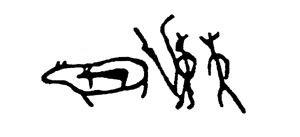 |